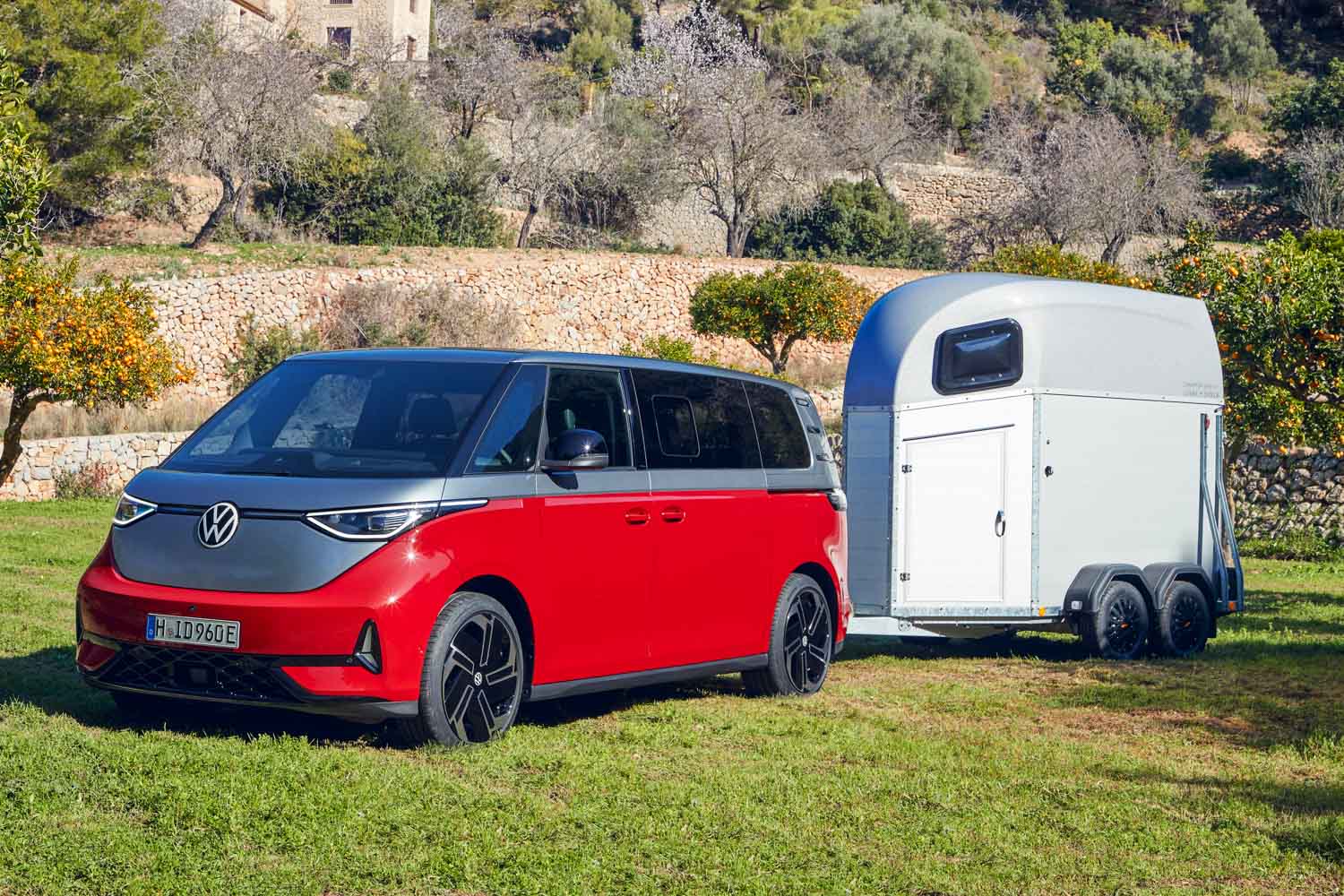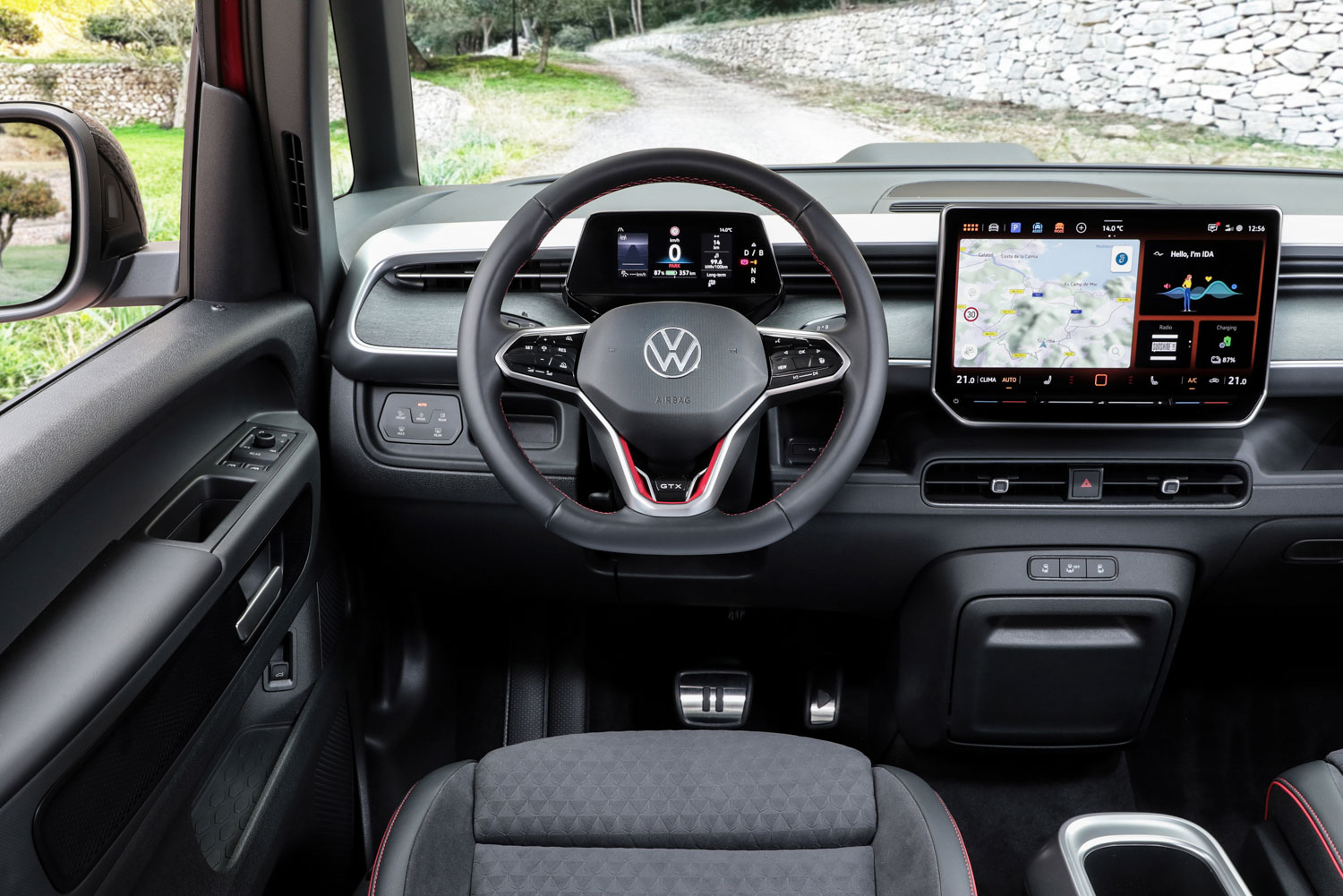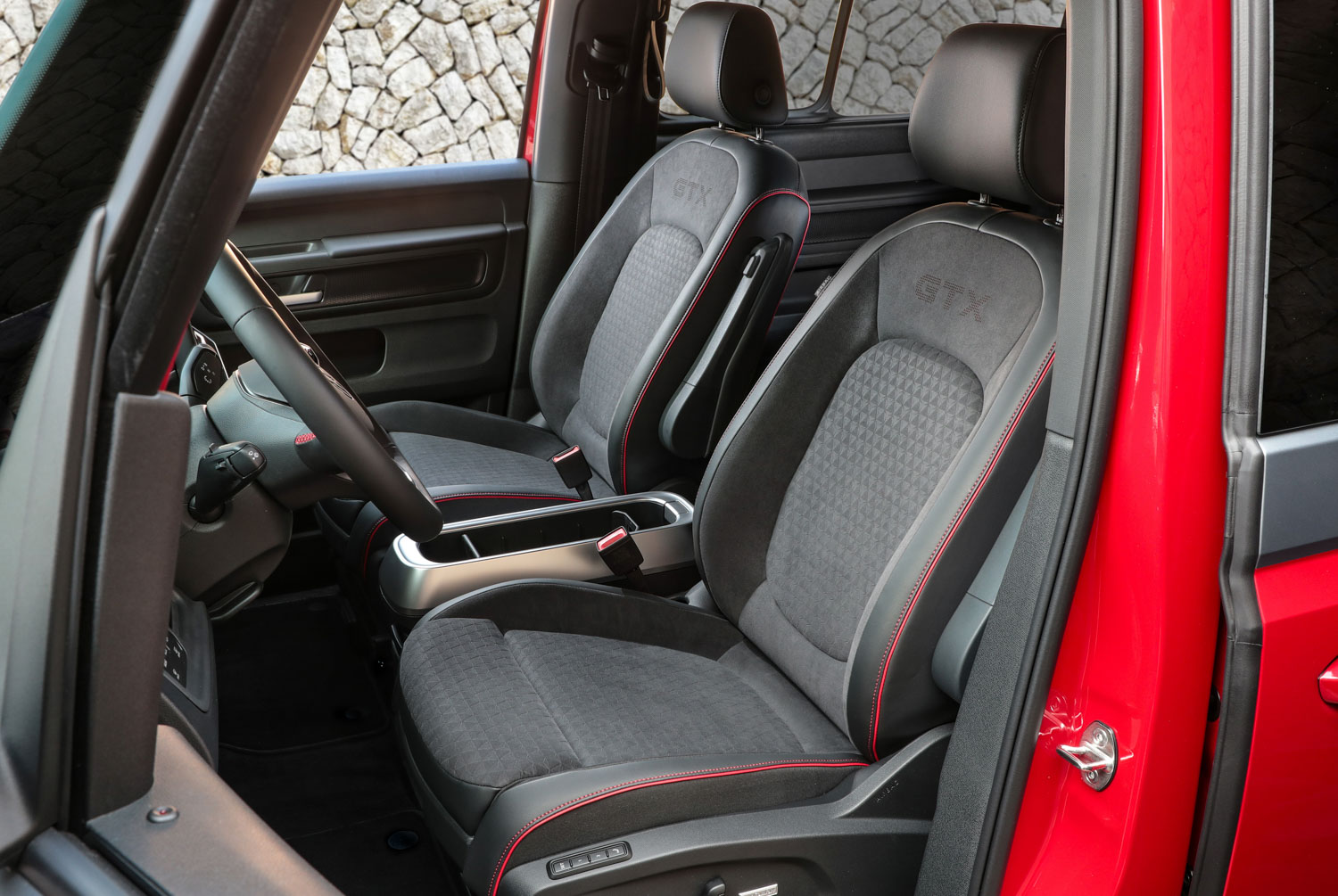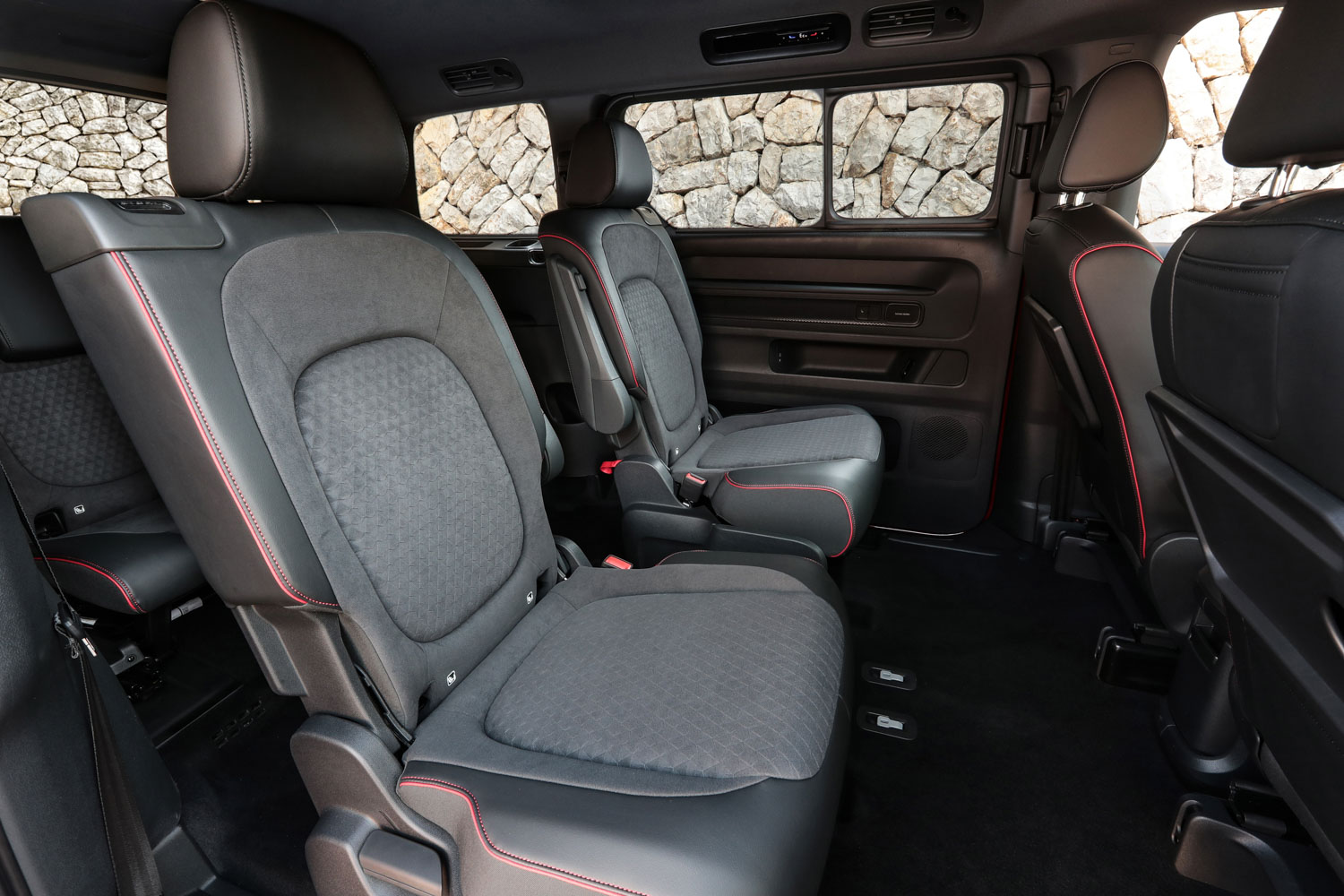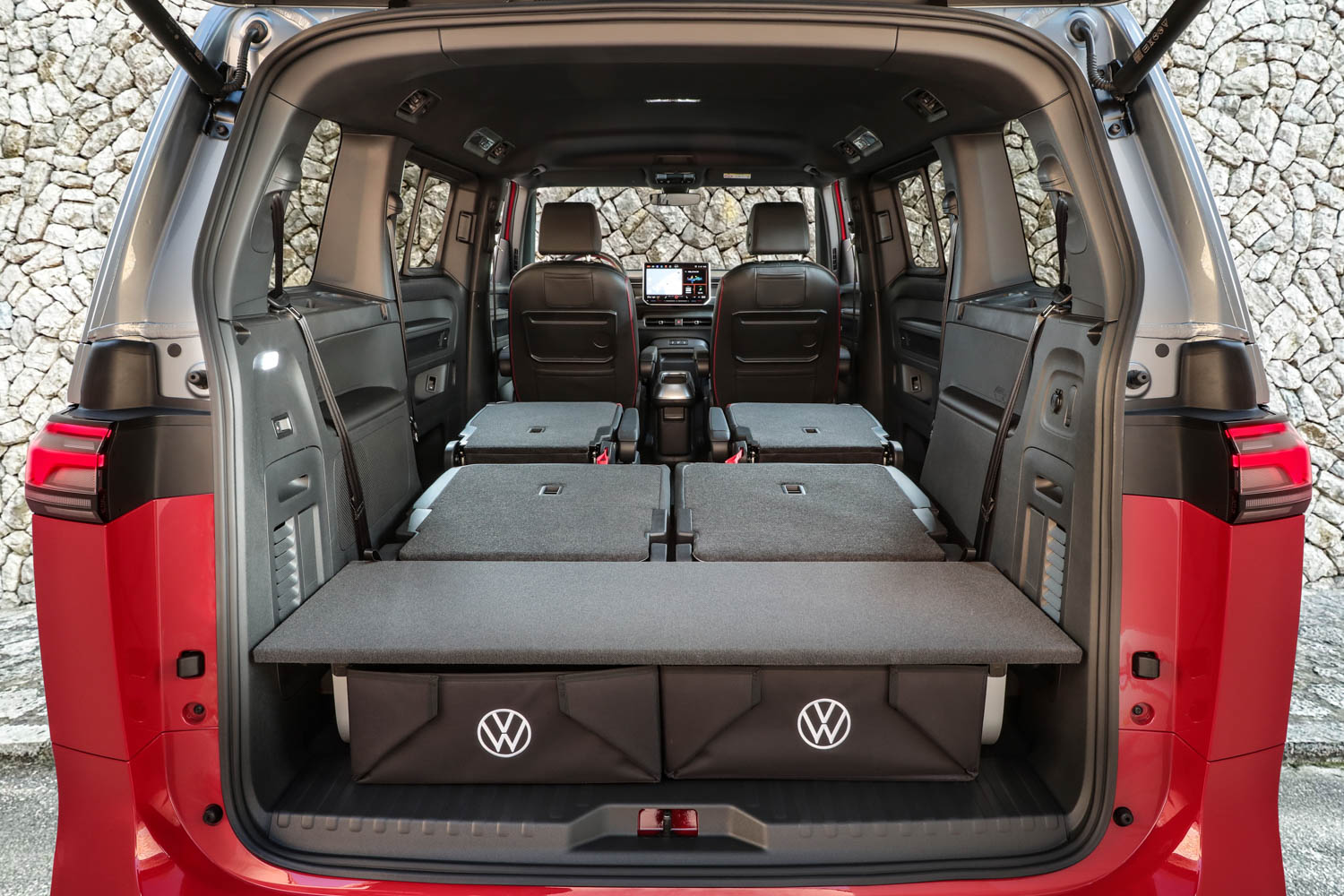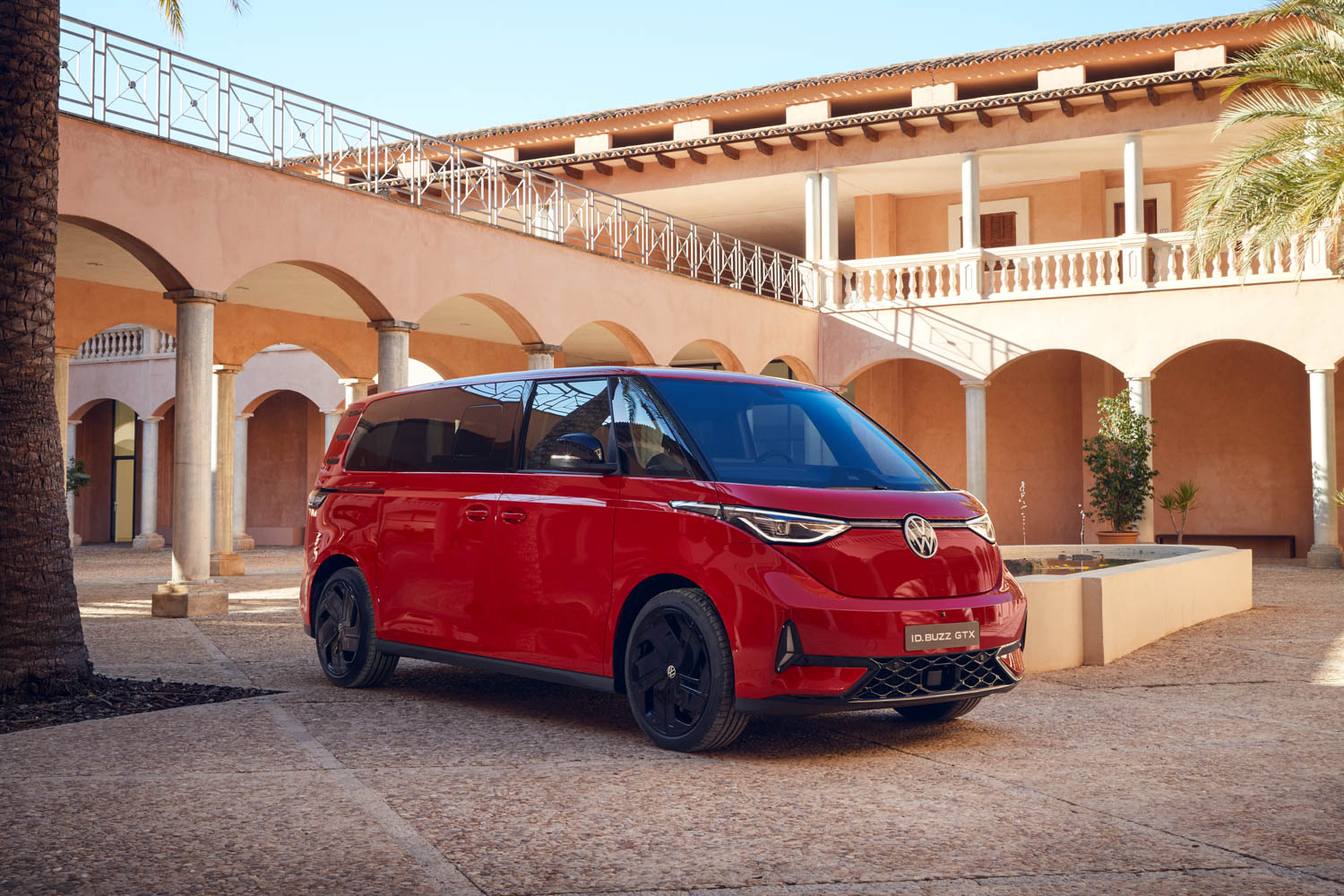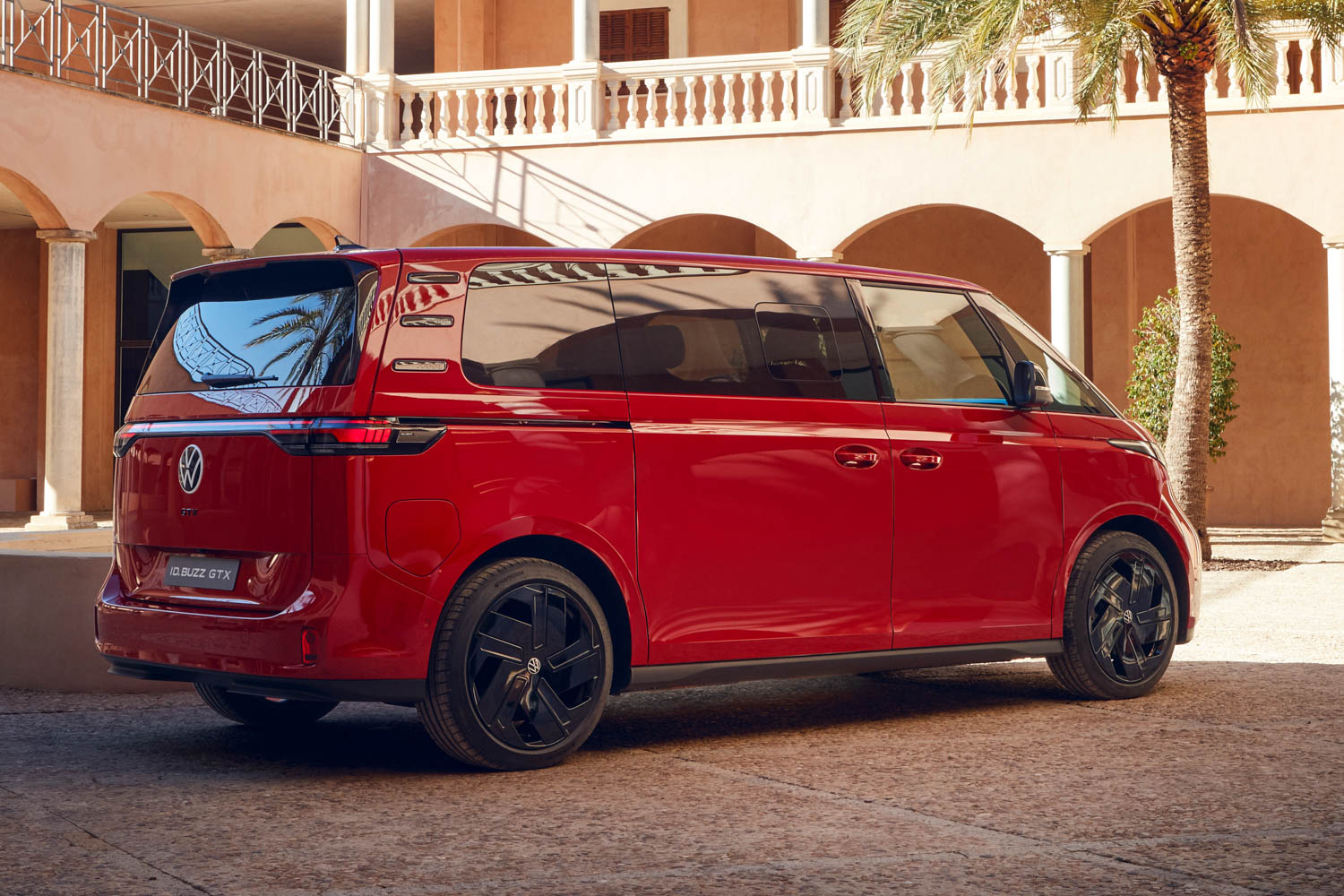Following in the same vein as its other electric vehicles, Volkswagen has revealed the ID. Buzz GTX as the range-topping version of its retro-styled van. Buyers will be able to choose between two wheelbase lengths, each with different sized batteries. The standard length gets a new 79kWh battery, while the extended wheelbase gets an 86kWh pack.
GTX styling for the ID. Buzz
You’ll be able to recognise the ID. Buzz GTX by its unique front bumper design that has a black honeycomb grille and side elements that give it a more distinctive appearance. Volkswagen’s IQ.Light LED matrix headlights are standard for the GTX version and new triangular LED daytime running lights forming the shape of an arrowhead are integrated into the front bumper.

A 19-inch Venlo alloy wheel is the standard fit for the GTX, and two optional wheel designs are also available. These are the Caracas, an all-black design, and the Townsville, which is a black and diamond-cut surface — both come in 21-inch sizes.
Volkswagen is rolling out a Cherry Red as an exclusive colour for the ID. Buzz GTX and this will be configurable either as a solid colour or optionally in a two-tone scheme with Mono Silver metallic. In total there are seven solid colours and four two-tone paint finishes available.
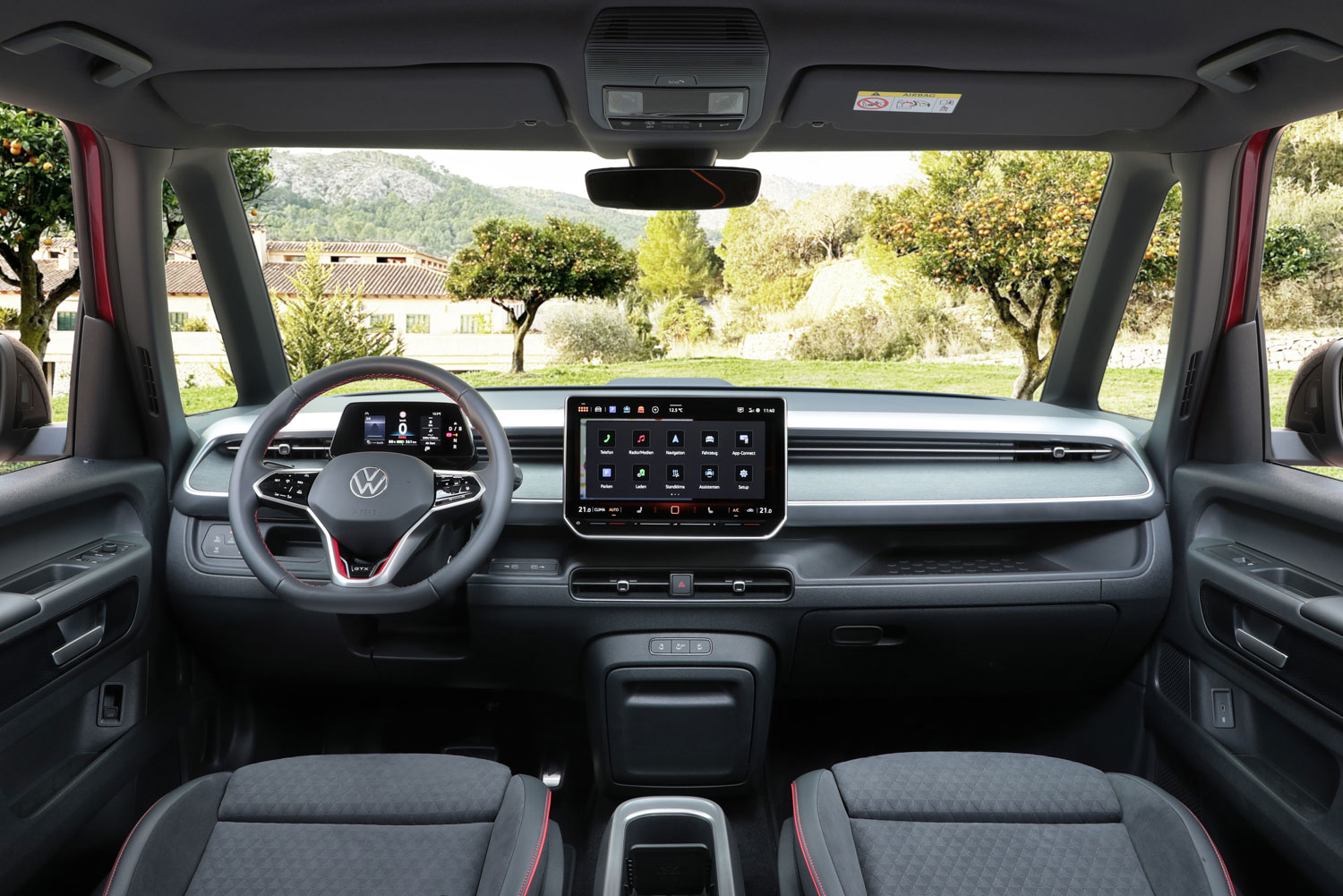
Inside the cabin there is a black headliner and the seats feature an exclusive GTX design. Designers use black ArtVelours Eco microfleece with a new diamond pattern and contrasting red stitching and piping. Volkswagen has redesigned the panoramic sunroof with smart glass that can electrically switch between transparent and opaque via a touch slider or by the IDA voice assistant.
Five, six or seven-seat versions
The standard wheelbase in the IB-Buzz GTX gets a five-seat configuration with a 60:40 split three-seat bench in the rear. A six-seat option with two individual seats in the second and third rows is also available. With the extended wheelbase, there is also a five-seat setup as standard, with the six-seat option available for a 2/2/2 layout or buyers can opt for a seven-seat variant with a three-seat bench in row two and two individual seats in the third row. The middle row seats can slide fore and aft by 150mm in the standard wheelbase and by 200mm in the extended wheelbase.
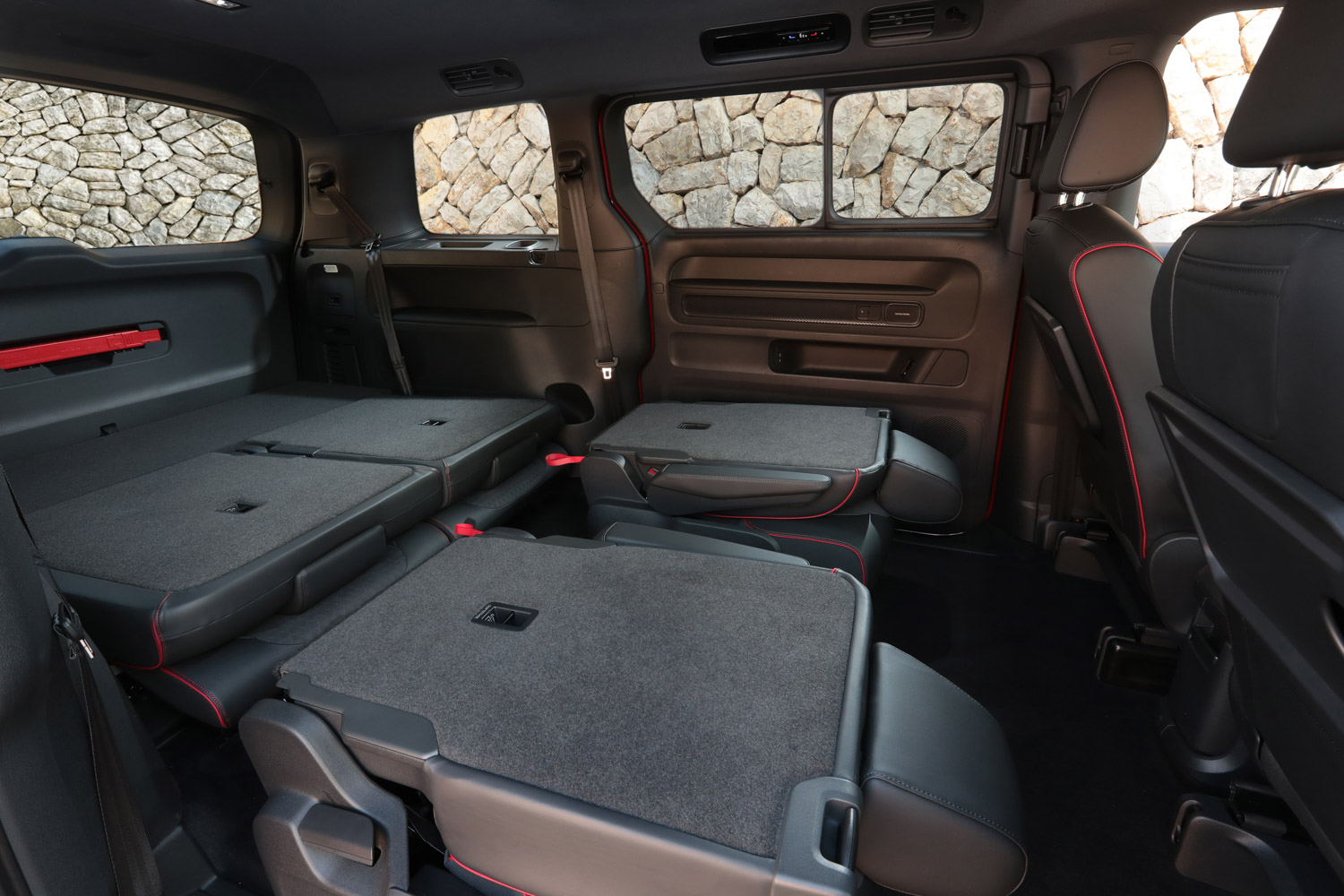
There’s still plenty of space inside the ID. Buzz GTX , with 1,121 litres of boot space in the five-seater and 2,123 litres when the rear seats are folded down. The extended wheelbase increases that cargo capacity to 1,340 litres when the third row of seats aren’t in use. When the are, there is 306 litres of boot space available.
ID. Buzz GTX performance
Volkswagen equips the ID. buzz GTX with a motor on each axle and power distribution operates by an all-wheel drive controller, providing an electric 4MOTION system. In most instances, the GTX operates as a rear-wheel drive vehicle. A permanent magnet synchronous motor (PSM), known internally as the APP550, provides the rear axle with 286hp (210kW) and a maximum torque output of 560Nm.
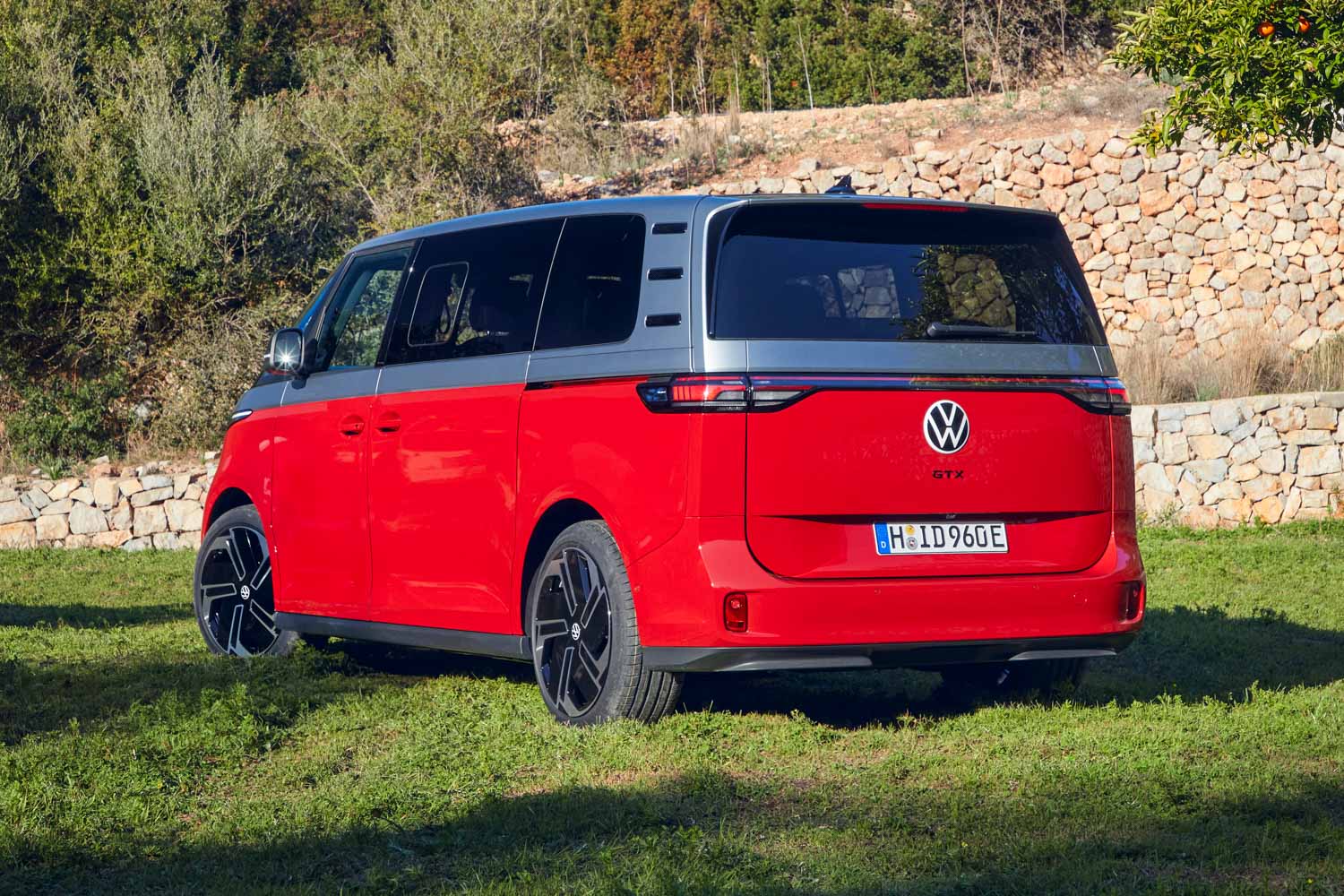
On the front axle is a smaller asynchronous motor (ASM), known as AKA150, producing 109hp (80kW) and 134Nm. When this motor is in its standby mode it consumes very little energy, and only activates when full power is requested. The combined output of the dual-motor setup is 340hp (250kW), resulting in a 0-100km/h acceleration in 6.5 seconds regardless of battery size. The top speed is electronically limited to 160km/h.
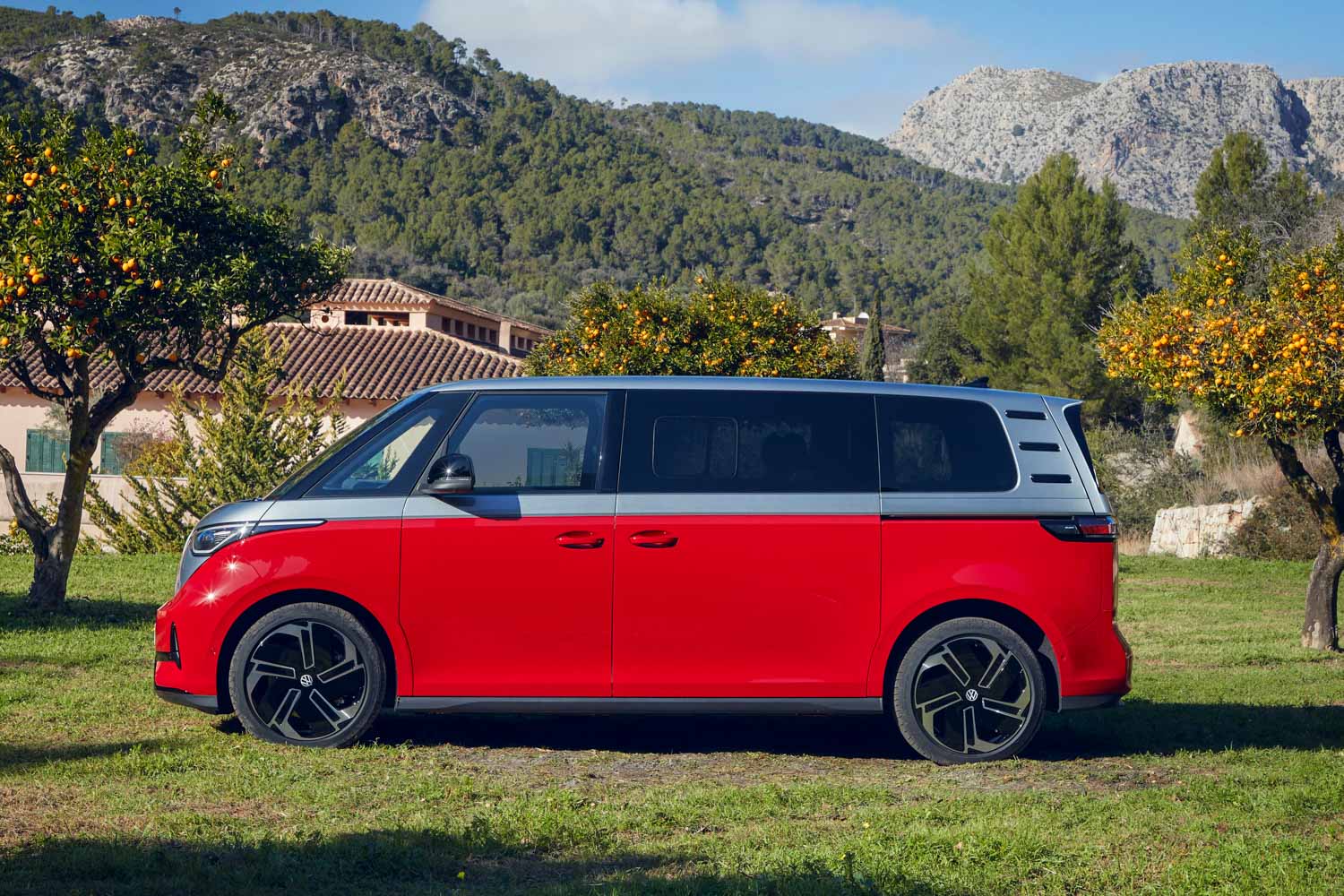
Battery performance
Both the 79kWh and 86kWh battery packs in the ID. Buzz GTX are new. The 79kWh unit comprises 12 cell modules and the 86kWh gains one additional cell module, and that makes the pack larger which is why it is only available in the extended wheelbase version. Fast charging with the 79kWh pack peaks at 185kW, enabling a 10 to 80 per cent top up in around 25 minutes. With the larger capacity 86kWh pack the DC charge rate increases to 200kW, which is sufficient for a 10 to 80 per cent charge in less than 30 minutes.
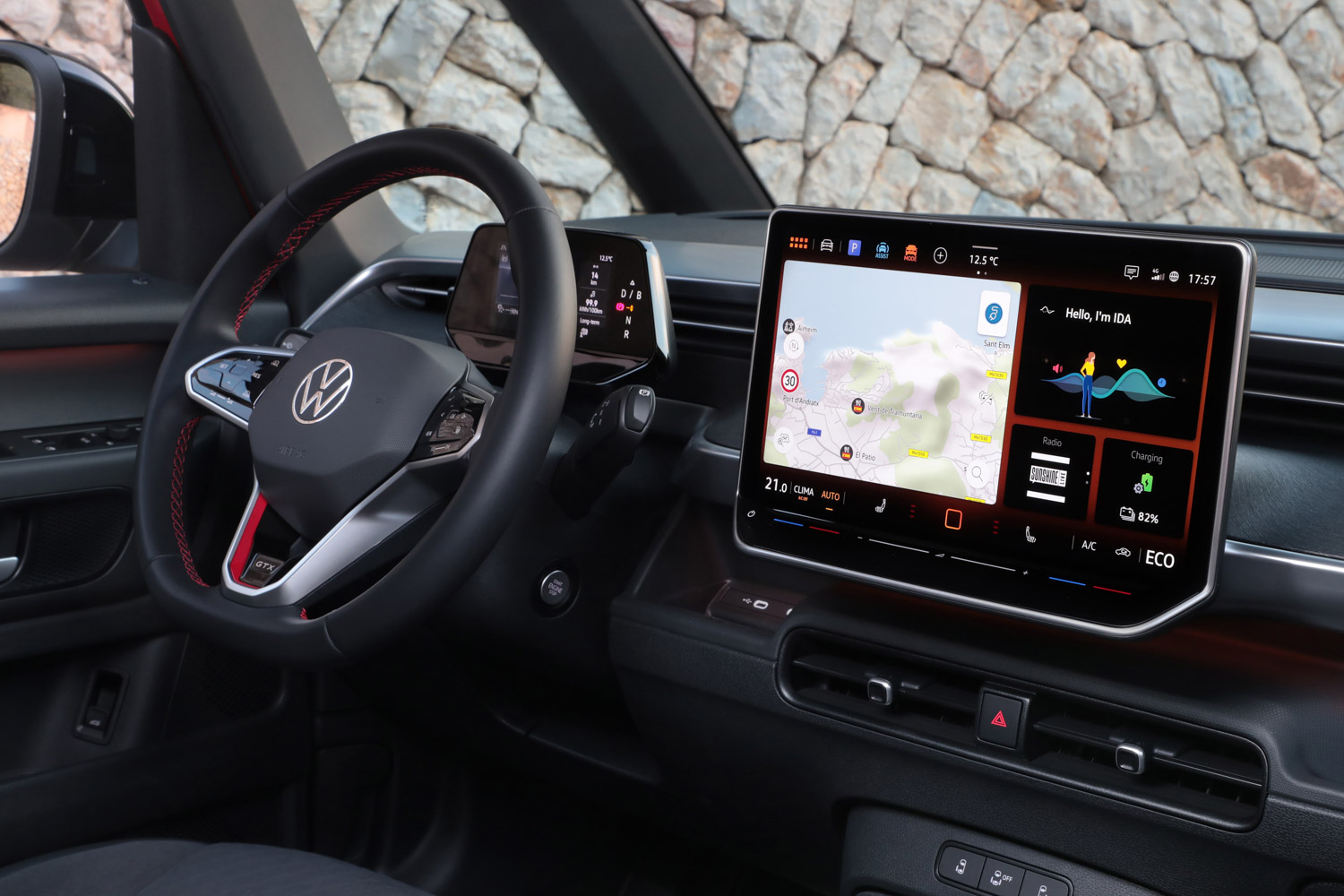
Battery pre-conditioning software can help to reduce charging time when the ID. Buzz GTX knows it’s heading to a charging station. It uses data from the onboard navigation to calculate how much to heat the battery to ensure it is at the optimum temperature by the time it gets plugged in. This can shave several minutes off a charging session, especially in winter months.


